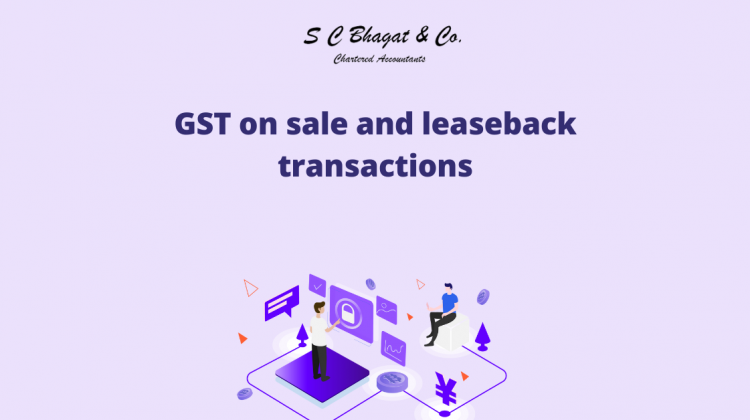A sale and lease back (hence referred to as “SLB”) transaction is a financial transaction in which one person sells an item and then leases it back for a long period of time. This means that the asset is used but not owned. Following the purchase of an asset, the buyer engages into a long-term sale and leaseback agreement at a pre-determined price. One reason for leaseback is for the vendor to make money by offloading a valuable asset to a buyer who is presumably interested in making a long-term secured investment. The second reason is for the vendor to make money by offloading a valuable asset to a buyer who is presumably interested in making a long-term secured investment. Leaseback transactions are generally undertaken in the real estate or any other capital good intensive sector.
Applicability of GST provisions on sale and lease back transactions
- Place of supply
In terms of Sec 10(1)(c) of the Integrated Goods and Service Tax Act,2017 (hereinafter referred to as “IGST Act”), the place of supply of goods, where the supply doesn’t involve movement of the said goods, whether by the supplier or the recipient, shall be the location of the goods at the time of delivery to the recipient. As per Sec 8 of the IGST Act, the supply of goods where the location of the supplier and the place of supply of goods are in the same State or the same Union territory shall be treated as intra- State supply.As SLB transactions do not involve any physical movement of the asset from the premises of the lessor to the lessee’s premises or vice versa, but only the ownership of assets gets transferred, the place of supply in the instant case remains the same. Accordingly, the SLB of the asset is considered as an intra-state supply as per provisions of Sec 8 and Sec 10(1)(c) and will be subjected to CGST and SGST - Invoicing
According to Sec 31(1) of the Central Goods and Service Tax Act, 2017 (hereinafter referred to as “CGST Act”), a registered person supplying taxable goods shall, before or at the time of:-
- removal of products for supply to the recipient, where the availability involves movement of goods;
- delivery of products or making available thereof to the recipient, in the other case
- issue a tax invoice mentioning the required details about the transaction such as quantity and value of goods, taxes levied, GSTIN of lessor and lessee and other prescribed particulars. The lessor must issue a monthly tax invoice to the lessee for the lease amount and the GST.
-
- E-Way bill
In terms of Rule 138 of Central Goods and Service Rules, 2017 (hereinafter referred to as “CGST Rules”), every registered person that causes movement of goods having a value exceeding fifty thousand rupees regarding either supply or for a reason other than supply or inward supply from an unregistered person, shall, before the commencement of such movement generate E way on the GST E-way bill portal. However, in the instant case, generally, the movement of goods doesn’t occur, and as no movement is involved, the generation of E waybill can be dispensed off. However, if any question is raised from the GST department, then the modus operanti of SLB transaction has to be explained, and the reason for non-generation of eway bill needs to be given. - Input tax credit AvailabilityIf the lessee does not have a GST registration in the state where the SLB transaction took place, he will be unable to claim an Input Tax Credit on the asset.
To cover the transaction’s working capital requirements, businesses are now engaging in sale and leaseback transactions involving capital assets. To determine the correct tax effects, the sale and leaseback transaction must be thoroughly examined.

